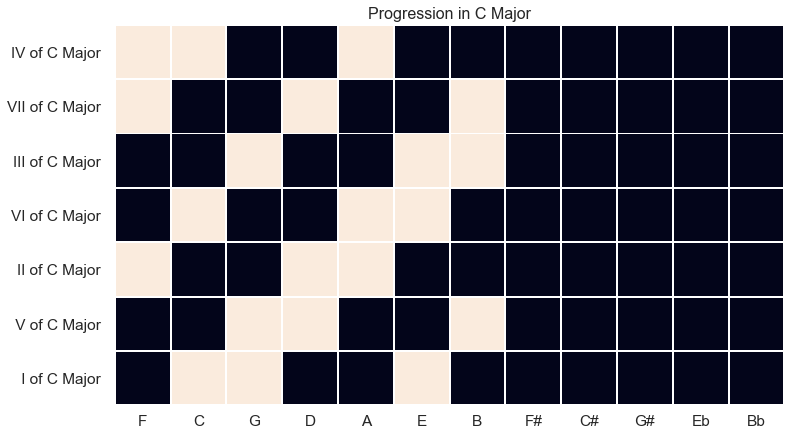A few simple patterns within the ternary harmony system can yield a surprising wealth of familiar diatonic chord progressions with close to zero computational effort.
To keep things simple, I’m going to do just one sequence, reachable with only a bit shift operation. All the major/minor folds of thirds fall naturally into the right place.

And it sounds familiar (in pure ratios of 3:2 relative to C Major):
Just for the sake of argument, here’s the same thing in equal temperament. It’s largely the same, perhaps a bit duller:
What stands out is that the chord progressions taken together form the entire scale.
The memory of all seven becomes a prediction space with a prime number of options. (This is further reinforced by the fact that many musical instruments give a strong overtone at the fifth.)
It turns out that a regular ‘stride’ over the prediction space forms important musical categories — key, scale, arpeggio — in an absolutely algorithmic way. The efficiency of this description in machine language will allow us eventually to seamlessly join the world of music notation to the world of audio.